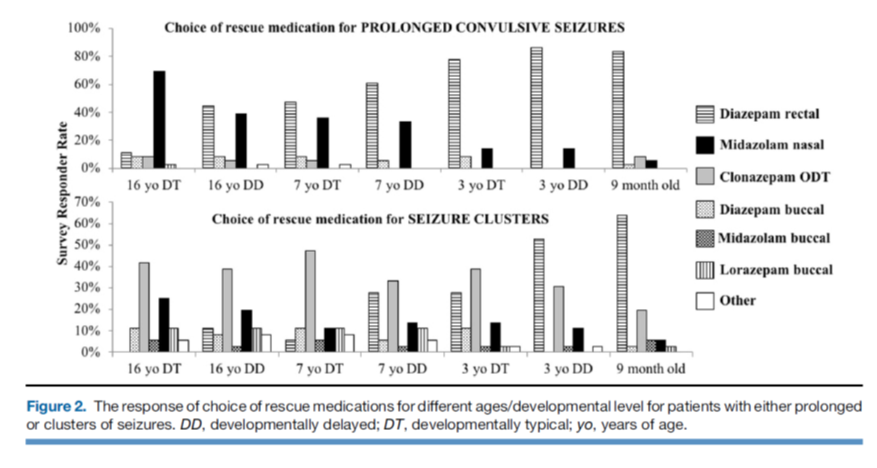Web Watch
Seizure Rescue Medication Use among Pediatric Epilepsy Providers
While either agent is acceptable, side effects and ease of administration may influence treatment choice.
Objective
To assess how pediatric neurologists prescribe home seizure rescue medications to treat acute prolonged seizures and clusters of seizures in children.
Study design
A brief, email survey was sent to the members of the Pediatric Epilepsy Research Consortium assessing seizure rescue medication prescribing practices for patients of different age groups, cognitive abilities, and seizure type. Survey responses were anonymous.

Results
Thirty-six respondents (of 76 surveyed; 47% response rate) completed the survey. Rectal diazepam was the most commonly chosen rescue medication for a prolonged convulsive seizure in a severely developmentally delayed 16-year-old (44%) and typical and delayed 7-year-old (44% and 61%, respectively), 3-year-old (78% and 86%, respectively), and 9-month-old (83%) patients. Most responders (69%) indicated that developmentally typical 16-year-olds would be prescribed intranasal midazolam. For clusters of seizures, clonazepam orally disintegrating tablets were the most frequent first-line option in all age groups, except developmentally delayed 3-yearold and 9-month-old children, for whom rectal diazepam was chosen more commonly. Medication dosing generally followed standard dosing guidelines with very few exceptions.

Conclusions
Rectal diazepam remains the most frequently used rescue medication for prolonged seizures for nearly all age groups, except in developmentally typical teenagers, for whom intranasal midazolam is used more often. Clonazepam orally disintegrating tablets are the most frequently used medication for treatment of clusters of seizures, except in younger patients. Further work is necessary to establish best practices for type and administration route of seizure rescue medications.
(Wallace A, et al. J Pediatr 2019;212:111-6).

